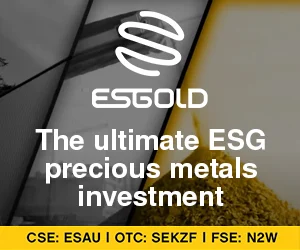On June 13, 2025, the SMM (13th) Minor Metal Industry Conference—Rare and Dispersed Metals Forum brought together industry leaders to discuss critical advancements in the recovery of rare metals. Co-hosted by Shandong Humon Smelting Co., Ltd. and SMM Information & Technology Co., Ltd., the conference featured a notable presentation by Wang Pengcheng, Director of the Precious Metals Plant at the Southwest Copper Branch of Yunnan Copper Co., Ltd. His talk focused on the “Current Status and Development of Selenium and Tellurium Recovery Technology,” shedding light on the evolving landscape of these essential metals.
Introduction to Southwest Copper
Wang began by outlining the historical evolution and milestones of Southwest Copper over the past 65 years. He highlighted significant achievements, particularly during the 13th Five-Year Plan, which marked profound changes in production and operational performance. Emphasis was placed on safety and environmental protection, showcasing the company’s commitment to sustainable practices.
Copper Smelting Process Flow
The presentation delved into the copper smelting process, particularly the treatment of copper anode slime. With a treatment scale exceeding 8,000 metric tons (mt), the facility employs advanced technologies, including the Kaldo furnace process. This innovative approach enables comprehensive recovery of rare and precious metals, yielding impressive quantities: 50 mt of tellurium powder, 400 mt of crude selenium, 100 kg of sponge platinum, and 500 kg of sponge palladium.
Current Status of Selenium and Tellurium Recovery
Selenium
Wang elaborated on the selenium industry chain, noting that global production is concentrated in regions such as China, the EU, Japan, Russia, and North America. China stands out as the largest producer, accounting for 33% of global output. The metallurgical industry remains the primary application field, consuming 44% of total selenium production.
Despite a current supply capability of 1,300 mt, the market demand for selenium is 2,400 mt, indicating a significant undersupply. Price trends show fluctuations, with current market prices at 130,000 yuan/mt for crude selenium, 215,000 yuan/mt for 3N selenium, and 285,000 yuan/mt for 4N selenium. High-purity selenium (5N and 6N) commands even higher prices, reflecting its limited market.
Tellurium
Turning to tellurium, Wang noted that global production exceeds 1,000 mt, with China producing over 60%. The rise of new energy technologies, particularly cadmium telluride thin-film batteries, has spurred demand. However, tellurium consumption remains relatively low outside the U.S., leading to an oversupply situation.
Tellurium is primarily utilized in semiconductors (39%) and the metallurgical industry (26%). Current market prices for 4N refined tellurium are around 740,000 yuan/mt, with high-purity variants priced significantly higher.
Processes for Recycling Selenium and Tellurium from Anode Slime
Wang discussed several processes for recovering selenium and tellurium from anode slime:
Kaldo Furnace Process: This mainstream method offers strong adaptability and high automation but has recovery rates of 60% for tellurium and 90% for selenium.
Semi-Wet Process: Known for high recovery rates (over 95% for selenium and 70% for tellurium), this method generates significant wastewater and has limited raw material adaptability.
Full-Wet Process: This process boasts the highest recovery rates (96% for selenium and 75% for tellurium) but is complex and costly, hindering large-scale application.
Combined Beneficiation and Metallurgical Process: While this method is cost-effective and adaptable, it struggles with tellurium recovery, achieving only around 40%.
Wang also detailed the preparation of 3N selenium from crude selenium and 4N selenium from crude tellurium, emphasizing the importance of refining processes.
Prospects for Selenium and Tellurium Recovery
The future of selenium and tellurium recovery is guided by several strategic plans:
The 13th Five-Year Development Plan for the Non-Ferrous Metals Industry aims for breakthroughs in high-purity smelting technologies and ultra-pure metal production.
Recent export controls on metals like tellurium highlight the regulatory landscape affecting market dynamics.
The Made in China 2025 initiative focuses on developing high-efficiency cadmium telluride thin-film batteries, indicating a push towards innovation in the sector.
Recovery Trends in Copper Smelters
Companies like Jiangxi Copper Corporation and others are committed to enhancing their capabilities in minor metal recovery, including selenium and tellurium. This trend reflects a broader industry focus on profitability through comprehensive recovery strategies.
High Purity of Selenium and Tellurium Products
Wang emphasized the importance of high-quality upgrading and greening processes in selenium and tellurium recovery. The industry is moving towards more sustainable practices, aligning with global environmental goals.
Digitization and Intelligence in Recovery Processes
The integration of technology into recovery processes is transforming the industry:
Automation: Automated production lines enhance efficiency and safety.
Robotics: Robots are increasingly used in hazardous environments, improving productivity.
Intelligent Warehousing: Automated inventory management streamlines operations.
Data Analysis: Online systems enable precise control and optimization of processes.
Development Plans for Selenium and Tellurium at Southwest Copper
Guided by comprehensive development plans, Southwest Copper aims to enhance its minor metal recovery capabilities, focusing on selenium, tellurium, and other associated metals.
Development Path for Selenium and Tellurium
Wang concluded with a vision for the future, outlining strategic pathways for the development of selenium and tellurium recovery technologies, ensuring that Southwest Copper remains at the forefront of the industry.
The insights shared at the 2025 SMM Minor Metal Industry Conference underscore the critical role of selenium and tellurium in modern technology and the ongoing efforts to enhance their recovery and production processes. As the industry evolves, these metals will continue to play a pivotal role in various applications, from renewable energy to advanced electronics.



![Current Trends and Advancements in Selenium and Tellurium Recovery Technology [Minor Metals Conference] – goldsilverpress Current Trends and Advancements in Selenium and Tellurium Recovery Technology [Minor Metals Conference] – goldsilverpress](https://static.metal.com/common.metal.com/images/header-en/smm-logo.png)
